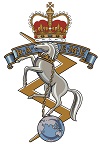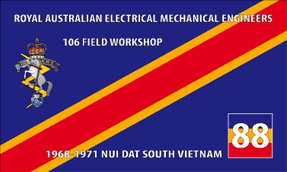1969
The After Effects of a Rocket Attack
Milton C. W. Pearson, CSM, 106 Field Workshop, 1968-1969
The enemy were using explosives to attack our Cavalry who were mounted in M113 Armoured Personnel Carriers; tracked aluminium armour vehicles.
This was resulting in loss of vehicles and in death and maiming of the crew, especially the drivers.
The debate was that the enemy were using massive amounts of explosives to blow up our Armour with some figures bandied about of up to 80lbs of explosive.
Some counter measure had to be devised and it was decided blow up a previously damaged carrier to gather data for possible solutions.
I was the Range Safety Officer for this trial. A Defence Science Field officer was sent from Australia to record the event. Invitations were extended to all Armoured Corps units and other interested parties to attend as observers.
The operation was conducted on the Range area, being the open ground on the Eastern side of the Task Force. The area itself was about 800m from the wire and extended down to a perennial North/South running creek. The creek might have been called "Song Ra".
A damaged M113 was towed down range, some 400m, and prepared. This involved filling the carrier with scrap metal in the form of tracks, road wheels etc to bring the vehicle up to its battle weight of 12 tons. The scientists set up their 8mm cameras to record the event.
The charge used was American C3 explosives that resembled a heap of light stones (like a light coloured blue metal). From memory 24lb was placed into a small shell scrape under the carrier. The source of detonation was electrical.
When Sgt Jim Ballantyne had lowered the last of the scrap into the carrier using a M543 recovery vehicle and driven off, the electrical detonator was fused into the detonation cord and inserted.
I returned to the Fitters Track following the cable that would carry the electrical current. I remember the grass was two to three feet tall.
There was quite a crowd of observers. During a safety check, I asked the OC of 3 Cavalry Regiment Major Ron Rooks to put his steel helmet on. He replied, "Mr Pearson! I wear my black beret into battle. So thank you, but I shall decline the offer."
The two splayed ends of the cabling I gave to one of my team who was squatting over the batteries inside the carrier (I cannot recall his name.) I told him that I would count down from ten to zero so that the demonstration could be recorded, photos taken etc.
Slight hiccup on zero; nothing happened!
I waited the mandatory thirty minutes specified.
After the break I traced the cable and found the smallest of nicks in the sheathing of the cable where the charge had earthed. I bound the break with tape and repeated the count down process.
The explosion was enormous; a couple of the road wheels flying some 200 meters.
On inspection, the carrier had been moved some distance leaving behind a four foot deep crater. This debunked the previous guesswork into the amount of explosives necessary to inflict sufficient damage to either destroy armoured vehicles or those on board.
Prior to my leaving Nui Dat I recall Cpl John Gifford welding armour plate under carriers to protect the crew from mine damage. In todays Army men like Gifford would receive a commendation of some sort. In fact the value of "The punch behind the task force fist" received little recognition.
Maybe the OC or Platoon Commander GE (2Platoon) are able to give the technical follow up to my story.

